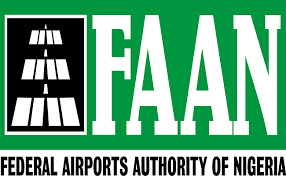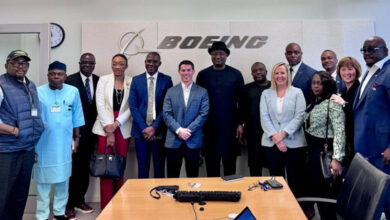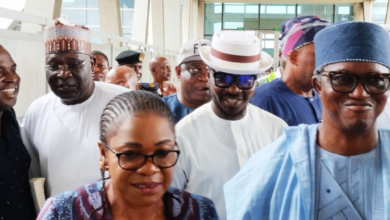Aviation industry flies up in post-COVID 19 resurgence

- Airlines increase fleet, slash fares
COVID -19 pandemic shocks have triggered a new trend in the country’s air travel industry forcing cost-conscious indigenous operators to evolve many survival strategies.
To keep their operations afloat, carriers are going for the broke by outwitting their competitors with the acquisition of newer, fuel-efficient aircraft that suites the market, lower airfares, in-country maintenance of the aircraft, sealing of commercial and technical partnerships such as codeshare and interline agreements as well as joint ventures with state governments which run airports to keep their aeroplanes filled with passengers.
Investigations by The Nation have shown that though passenger traffic is experiencing a spike compared to the onset of the pandemic, new airlines are springing up with strategies to compete for their share of the air transport market, latching on the choice of equipment, route network, fare offering and others that will guarantee their survival in the sector.
While prospective operators, namely Green Africa Airways, Value Jets, Rano Air, Jet Airways, Cardinal Airlines, Cally Air, NG Eagle Airlines, 7 Star Global Airlines, North East Regional Shuttle Limited, Kanem Air and Mambilla are gearing for take-off, carriers, including Air Peace, Dana Air, Aero Contractors, and Arik Air are consolidating their strategies to expand operations on new routes.
Besides the spike in passenger traffic following the increasing number of Nigerians that have received COVID-19 vaccines, scores of aircraft have been brought into the country by operators, who intend to deepen their market penetration using the right size of medium aircraft.
According to The Nation,s investigation, Air Peace has brought in three brand new Embraer 195-E2 regional jets, out of the 30 it intends to have of the aircraft type.
The decision by the carrier, its Chairman and Chief Executive Officer, Allen Onyema, said is cost-driven with lower fuel consumption, efficiency and utilisation of such equipment.
Other operators are also looking in the direction of medium aircraft, which according to experts, aligns with the economics of cost in running airline business post-COVID-19.
Fledging carrier, United Nigeria Airlines, is also deploying the regional Embraer jets. The airline has brought in four of the aircraft types to compete with other carriers on major routes.
Another carrier, Green Africa Airways, is also using equipment – size and type of aircraft – ATR 72 – 600 to raise the stakes as it expects to introduce the low-cost concept in air travel in Nigeria when it begins scheduled commercial flights in July.
In the last six months, scores of aircraft have been brought into the country by indigenous carriers, proving pundits wrong that the pandemic has been mostly negative for the sector.
While United Nigeria Airlines has acquired four aircraft in the few months of its operations, state-backed carrier – Ibom Air has been ambitious with its fleet expansion programme of six aircraft in the two years of its operations.
Though the airline is outwitting its competitors with the use of medium Canadian jets – Bombardier CRJs – the airline is leaving nothing to chance as it a few months ago acquired two Airbus aircraft, with which it intends to make a foray into the regional market.
In an interview, its Chief Operating Officer, George Uriesi said the carrier pioneered the first interline/codeshare agreement with Dana Air for a pool of fleet to boost airline efficiency and profitability.
Considered a game-changer by many industry experts, the operational/commercial pact between the two carriers would give them an edge on their routes.
Some carriers, including United Nigeria Airlines, is partnering with state-owned and run airports to drive passenger traffic.
Last week, it signed a Memorandum of Understanding (MoU) with the Bayelsa State government for the commencement of scheduled flights into, and out of, the Bayelsa International Airport.
According to the terms of the agreement, United Nigeria will operate four flights daily in and out of Bayelsa International Airport.
The airline is to service the Bayelsa International Airport daily from the Murtala Muhammed Airport (MM2) in Lagos and Nnamdi Azikiwe International Airport, Abuja.
Under the MoU, United Nigeria will commence direct flights to Bayelsa International Airport in July 2021.
Also, Cross River State-backed Cally Air, recently acquired two Boeing 737 aircraft to boost its operations. The aircraft will be operated under a joint venture with Nigeria’s oldest carrier – AeroContractors.
The move, investigations reveal, is to break the barrier of prohibitive fares on the Lagos – Calabar and Abuja routes offered by their competitors.
Green Africa Airways, on its part, has acquired three aeroplanes for scheduled commercial operations.
Besides the fledgling carriers, which are introducing a new fleet of aeroplanes: Embraer, Bombardier ATR 72-600 aircraft, the operators are sticking to homogeneity in aircraft types driven by cost considerations and other economies of scale.
Chief Operating Officer, Dana Air, Obi Mbanuzuo said this is the time to ‘kick on’, following the problems caused by the pandemic.
Instead, the industry, he said, is gearing up. Mbanuzuo said Dana Air is evaluating more Boeing 737-300s and its first Embraer 190 E1s, for entry into service either in the fourth quarter of the year or the first quarter of next year.
Speaking on the rationale for acquiring brand new fuel-efficient aeroplanes as a strategy to keep the business running, Onyema said: ” The Embraer 195-E2 aircraft will further help us actualise our ambition of connecting, not just the whole of Nigeria, but the entire African continent, while feeding long-haul flights from our Lagos hub.
“The acquisition will enable us to deliver on our ‘no-city-left-behind’ initiative, which is underpinned by our goal to reduce the air transportation burden of Africans.”
Only last week, the carrier resumed flights on some new routes including Lagos – Ilorin – Abuja with plans to connect city pairs namely Yola – Sokoto, Kano, Maiduguri, Owerri – Kaduna, Owerri – Kano, Benin – Port Harcourt, Port Harcourt – Kano, Asaba – Kano, Port Harcourt – Kano, Gombe, and Enugu in a bid to connect the nation’s air network and reduce fares.
Besides, opening new routes, two indigenous carriers are mulling the setting of a local aircraft maintenance centre to reduce the prohibitive costs of sending aeroplanes for major checks overseas.
This move, one of the operators said would not only reduce operating costs but guarantee the survivability of airlines.
Investigations by The Nation also revealed that investors are joining the aviation industry by floating commercial airlines due largely to rising insecurity, banditry and kidnapping in some parts of the country.
Such investors, it was learnt are latching onto the safety component that air travel offers to birth such projects.
Apart from the elite who always travel by air, middle-income earners are increasingly avoiding road travel on the grounds of insecurity.
In the North, for instance, experts have cited the challenges of travelling from Abuja to Kaduna, Kano, Gusau, Kebbi and Sokoto in the North-West; and Yobe, Borno, Bauchi, Gombe, Yola and Jalingo in the North-East.
An aviation expert, Sheri Yari said besides profit, those that have the means are considering investment in airlines because of the increasing demand for air travel.
Three of the upcoming investors in the North include North-East Regional Shuttle Limited, Kanem Air and Mambilla Air.
The three airlines are already processing their Air Operator’s Certificate (AOC) with the Nigerian Civil Aviation Authority (NCAA).
On his part, the CEO, Top Brass Aviation and former Managing Director, Nigerian Airspace Management Agency (NAMA), Capt. Roland Iyayi said the timing for new airlines is appropriate.
“Timing of the entry may have been informed by the downturn of the industry generally as it is easier now than before to access aircraft assets cheaply. As a matter of fact, the downturn is the best time to acquire the aircraft assets.”
He also noted that the Northern air market needs additional servicing.
“The northern part of the country is underserviced to a large extent. Therefore, it would provide the opportunity of establishing a niche for prospective airline investors. The plan I presume would hedge the confidence of a timely recovery and niche to project viability.
“How this plays out in the long term would be largely determined by whether or not the economy recovers expeditiously from the current depression,” the aviation expert said.
Another analyst and Assistant Secretary of Aviation Roundtable, Mr Olumide Ohunayo, said new airlines were not coming up in Nigeria but all over the world including UAE, Columbia, USA, UK, Italy, Vietnam, South Africa and New Zealand.
He said most airlines were taking advantage of the low cost of hiring aircraft to float their airlines in Nigeria.
Speaking in an interview, NCAA’s Director-General, Captain Musa Nuhu said there could be no better time to have more airlines in Nigeria if the operators acquire aeroplanes that are suitable for the market and effectively manage their costs.
Investigations also reveal that some carriers that suspended operations many years ago including Chanchangi Airlines Limited are putting the finishing touches on their applications to return to the skies.
A source familiar with the development said the carriers is already in talks with aircraft manufacturers to acquire Embraer regional jets and ATR aeroplanes to reposition its stake in the air travel market.
The airline controlled the northern routes in the late 1990s and early 2000s.
Many passengers who spoke to The Nation expressed mixed reactions over the burgeoning of airlines querying if a large number of carriers would bring about lower fares.
A frequent air traveller, Comfort Idris asked: ”At the moment airfares are still very expensive on many routes. We hope the coming to being of these new airlines will achieve some level of reduction in airfares.”
Thenationonlineng.net





